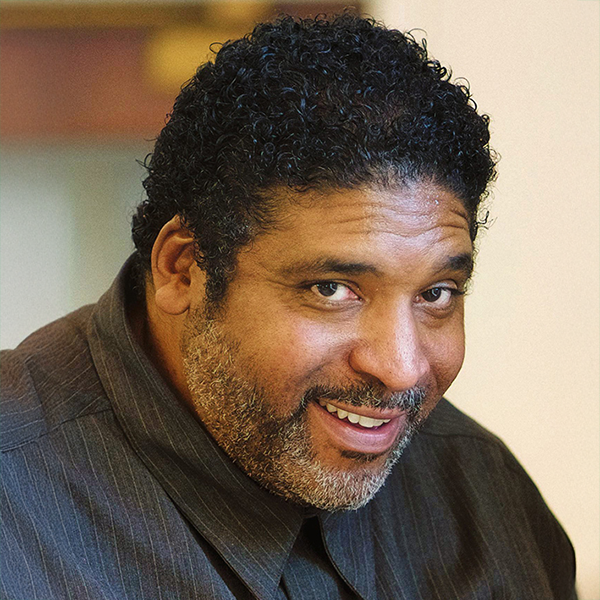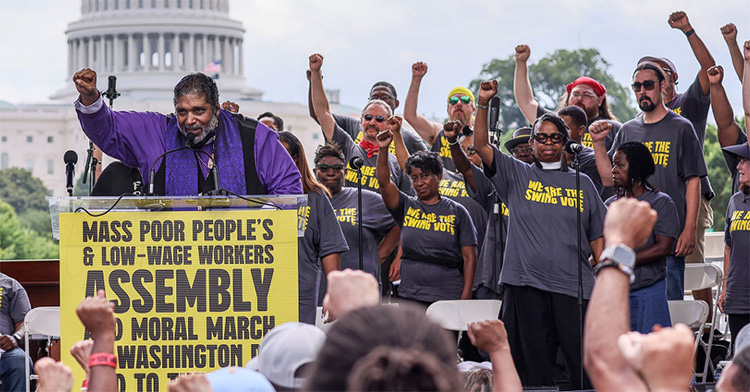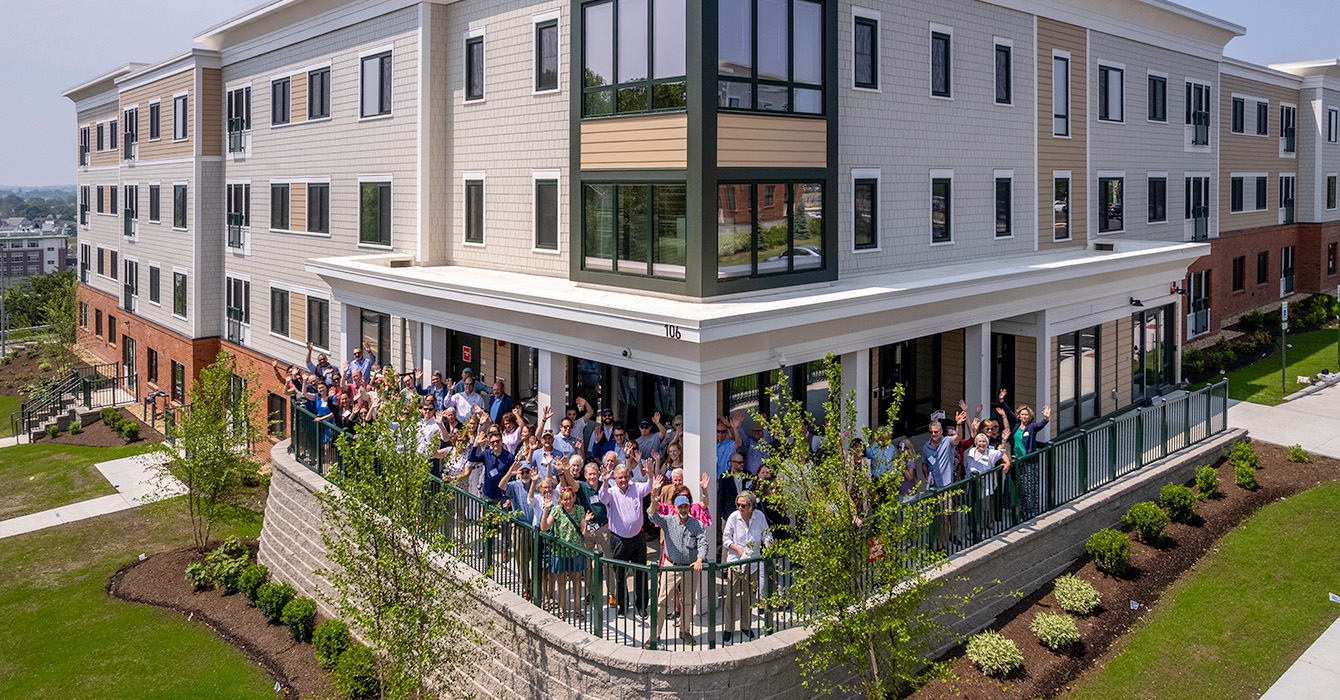Editor’s note: Jonathan Wilson-Hartgrove helped write “White Poverty” and also gave an interview to Faith & Leadership about the book.
Ten thousand people — the vast majority of them white — rallied in downtown Asheville that Monday afternoon in August 2013. It was the largest mass demonstration in that mountain town’s history. When I finally made it to the back of the stage, a local leader of the Tea Party met me at my vehicle and tried to start an argument in front of some members of the media. But a group of older white women who were on the program to sing got between me and the politician and told him in no uncertain terms that none of us was there to listen to him.
Since that afternoon in the mountains of my home state, I’ve had the chance to travel the hollers and back streets of America, as I’ve already described in some detail, meeting poor white people who are hungry for a better identity and movement that can show their nation and the world who we might yet be. No doubt, there are millions of people who oppose them, and the networks funded by some of the richest people in the world will continue to amplify their voices. While those people are our opposition, they are not our enemies. Driven by myths that, in the end, will cut them off from the people they love most and from the things we all need to survive and thrive, they also need a better story. When we organize to build a coalition that can defeat them politically, we do it for their sake too.
In recent years, my friend Willie Nelson has brought his beat-up old guitar and joined the Poor People’s Campaign at rallies to sing his song, “If you don’t like who’s in there, vote ’em out.” I appreciate his good humor and practical realism when it comes to politics. But his insight is even more profound in a song he sings on a new album he released when he was 89. After grappling with the overwhelming challenges we face and the fact that some people are dead-set against the sort of movement-building we need to make real change possible, Willie sings:
There are those who are blind so we’ll all have to lead them
It’s everyone’s job till we get the work done.
In the biblical imagination that I’ve spent my life cultivating, this is the notion of a remnant. When the prophets decry the evils of political leaders and cultural systems that prop them up, they always tell the people that God doesn’t need everyone to stand up against injustice. God needs a remnant, just a small number. If a community will come together to declare that another way is possible, they can change the conversation in a society. If even a small group bears witness to the fact that the way things are is not the way things have to be, then everyone who is dissatisfied and questioning their circumstances has somewhere to look for an alternative.
As a preacher, I’ve learned from the poor people who are forming a remnant to reconstruct democracy today what the prophets were talking about thousands of years ago. That night back in Cleveland, when Teri [an organizer who spent decades standing up to coal corporations] shared her fantasy that, one day, we might all get together to challenge the lies that keep us apart, I had planned to preach the famous passage from Amos 5 that ends with the prophet’s call to “let justice roll down like waters and righteousness like an everflowing stream.” But until I’d read the prophet’s vision again through Teri’s eyes, I had never noticed how the cascade of justice that Amos foretold depended on the people in Amos’s day doing what poor people are doing now: remembering the ties that bind them by coming together as a remnant calling for change.
In her work on social movements, Harvard University’s Erica Chenoweth calls this phenomenon the “3.5 percent rule.” After studying people’s movements across the globe in different cultural contexts and at different moments in history, Chenoweth has concluded that a social movement that wins the active support of around 3.5 percent of a society’s population wins its demands. The prospect of organizing a hundred million voters into a moral fusion movement in the United States is daunting, but it turns out that the movement itself doesn’t need to be anywhere near that size. Because movements move people far beyond their immediate reach. By accelerating the active engagement of a relatively small portion of the population, a moral fusion movement can change the political possibilities for everyone.
So, while I am sober about the forces opposing democracy and an economy that works for all of us, I remain hopeful. From the Forward Together Moral Movement in North Carolina to the Poor People’s Campaign that is now mobilizing poor people in almost every state, I have had a chance to walk with leaders like Pam [Garrison, an activist from West Virginia] and Stanley [Sturgill, a former coal miner and activist from Kentucky], … refusing to be divided by the old myth’s lies. In June 2022, they and many others mobilized tens of thousands of people for a march down Pennsylvania Avenue and a Mass Poor People’s and Low-Wage Workers’ Assembly at the base of Capitol Hill. For 100 minutes, poor people had a platform in the nation’s capital to speak directly to the issues that impact their lives. I stood on the stage with Rev. Bernice King, the daughter of Dr. Martin Luther King Jr. and Coretta Scott King, looking across a sea of people that stretched as far as the eye could see. “This is what Mama and Daddy and so many others were working for,” Bernice said to me. Together, we are remembering the ties that bind us.
And we are not alone. Low-wage worker movements like the one I’ve described at Starbucks [where many workers have unionized] continue to grow and have built strong, fusion leadership, insisting that living wages are a moral issue. The anti-racist organizing of the past decade has put a multicolor coalition on the streets and in polling places across the nation, electing a Congress that looks more like our communities than at any time in American history. Young people fighting for climate action and gun control recognize the need for fusion coalitions, and they are building deep and wide in the fight for their lives. Yes, reactionary extremism and white Christian nationalism are bolder and more visible than most of us have seen in our lifetimes. But as they used to say in South Africa during the struggle against apartheid, “only a dying mule kicks the hardest.” They wouldn’t be fighting us this hard if they didn’t know we have the power to win.
So I take solace these days in a phenomenon in physics called Bernoulli’s principle. It explains how wind pushes the wings of an airplane up by going faster over the top of a wing than it goes over the bottom, creating a lift. Because of Bernoulli’s principle, a modern sailboat can sail against the prevailing wind.
When you’re sailing downwind, everybody knows that the wind is pushing your boat. But Bernoulli’s principle explains how it is possible to go upwind.
If the sail on a boat is set right, then the headwind has to separate into two flows: one flow goes around the sail from the outside, the other goes through the inside. The path of these two flows does not have the same length, but the two flows must arrive at the same time. This means that the flow outside the sail must be faster than the flow from the inside. By accelerating outside, this flow creates a vacuum that sucks up the sail. And it pulls the boat forward, into the headwind.
For a movement to succeed, it doesn’t have to change the wind. It just has to gather a force that accelerates forward to create a vacuum that can pull the whole society forward. It’s a sort of social Bernoulli’s principle. If we set our sails right, then moral fusion can pull us where we need to go, even against the headwinds of injustice. We don’t have to deny the headwinds; we need not pretend that the dangers roaring about us are not real. To hold on to hope that a Third Reconstruction is yet possible, we simply have to allow ourselves to be caught up in the moral fusion movement that is accelerating toward love, justice, and mercy for all. We only have to press on, forward together, and the power of our movement will create a vacuum that pulls the ship of state forward toward a Third Reconstruction.
Reprinted from “White Poverty: How Exposing Myths About Race and Class Can Reconstruct American Democracy,” by the Rev. Dr. William J. Barber II with Jonathan Wilson-Hartgrove. Copyright © 2024 by Reverend Dr. William J. Barber. Used with permission of the publisher, Liveright Publishing Corp., a division of W.W. Norton & Co. Inc. All rights reserved.






















